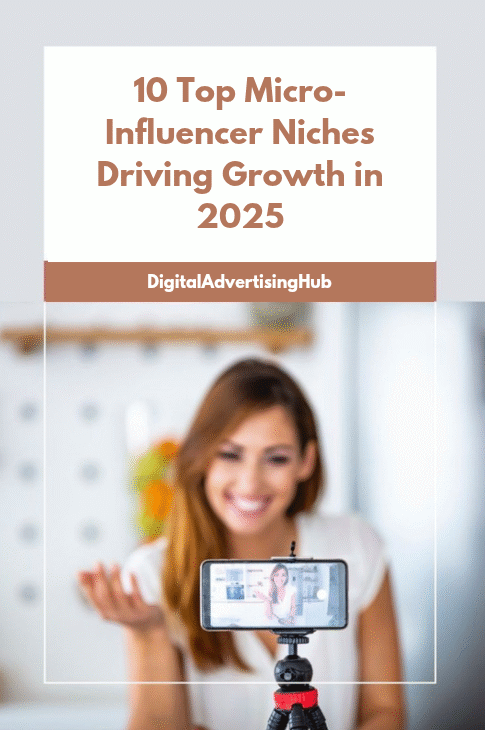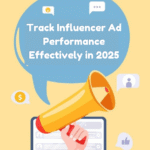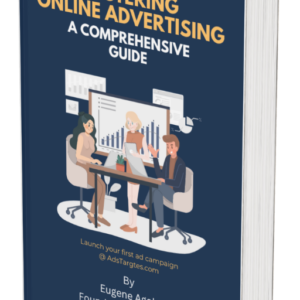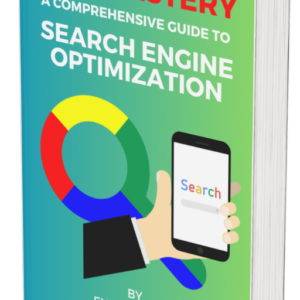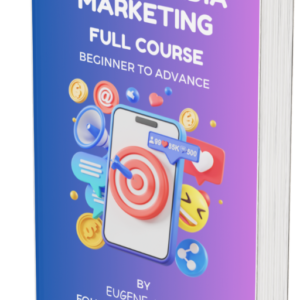The influencer marketing game has changed. Gone are the days when brands only chased celebrity names with millions of followers.
In 2025, the spotlight belongs to micro-influencers—creators with smaller but highly engaged communities who drive real conversations, trust, and conversions.
These aren’t distant icons; they’re everyday people with authentic voices that resonate deeply with niche audiences.
What makes them so powerful is their ability to connect on a personal level.
Whether it’s a food blogger sharing budget-friendly recipes, a fitness coach guiding quick home workouts, or a finance guru breaking down money hacks, micro-influencers deliver content that feels relevant and actionable.
And for brands looking to grow, that intimacy translates directly into profitability.
Why Brands Are Betting Big on Micro-Influencers

Marketers are quickly realizing that the strength of campaigns no longer lies in chasing massive reach through celebrity endorsements or mega-influencers.
Instead, the real traction comes from working within micro-influencer niches—i.e. creators with smaller but highly engaged audiences.
These individuals operate in defined niches and maintain genuine relationships with followers, which translates into stronger trust and higher conversion rates for brands.
Industry research confirms this trend. A HubSpot survey revealed that micro-influencers deliver 60 percent higher engagement rates compared to their macro counterparts.
Engagement is not just about likes and shares—it often results in real sales lift, particularly when campaigns target buyers in specific categories.
By narrowing the focus, brands avoid wasted impressions and reach people already primed to take action.
Another reason brands prioritize top micro-influencer niches is cost-effectiveness.
Smaller creators typically charge less for collaborations, allowing companies to stretch their budgets across multiple influencers.
This strategy amplifies content through diverse voices without sacrificing authenticity. The flexibility to scale partnerships also means businesses can experiment with different approaches, identify what resonates, and double down on high-performing verticals.
In 2025, marketers need to understand not just that micro-influencers matter, but also which niches bring the strongest ROI.
Selecting the right creators in spaces like fitness, beauty, gaming, or personal finance can be the difference between mediocre engagement and campaigns that drive measurable business results.
Let’s break down the most promising categories and what makes them stand out in today’s evolving digital landscape.
#1. Health and Fitness Creators Shaping Consumer Choices
The health and fitness sector consistently ranks among the top micro-influencer niches because of its universal appeal and evergreen relevance.
As consumers continue prioritizing wellness, they seek credible voices who can guide their exercise routines, nutrition decisions, and lifestyle habits.
Unlike generic celebrity endorsements, micro-influencers in this space often come across as relatable role models, sharing realistic progress, struggles, and victories.
A recent Statista report shows that global downloads of fitness apps surpassed 800 million in 2024, a clear sign that demand for fitness-related content is surging.
This digital engagement translates into opportunities for brands selling supplements, workout gear, fitness programs, and even healthy snacks.
When a micro-influencer demonstrates how they use a product in their daily routine, it resonates far more than a polished advertisement.
What sets fitness creators apart is the intimacy of their content.
Whether they post workout videos, daily meal logs, or recovery advice, their followers actively comment, ask questions, and implement recommendations.
For brands, this creates a direct line of influence over purchase intent. The strength of this connection explains why health-focused campaigns consistently achieve above-average ROI compared to broader advertising channels.
In addition, micro-influencers in this niche offer strong localization benefits. For example, a fitness creator focusing on Lagos-based gyms or diets specific to Nigerian cuisine speaks directly to regional audiences.
This localized expertise allows brands to enter new markets while maintaining authenticity. For global companies, it also means they can replicate partnerships across multiple geographies with influencers who bring cultural relevance.
The health and fitness niche has staying power. As people invest more in personal well-being, brands that align with credible creators will continue to see sustainable growth.
#2. Beauty and Skincare as High-Trust Niches
Beauty remains one of the top micro-influencer niches because of its dependence on personal recommendations.
Consumers often hesitate before purchasing skincare products or cosmetics, as the wrong choice can lead to poor results or even damage.
Micro-influencers bridge this gap by providing honest reviews, tutorials, and transformations that inspire confidence in buying decisions.
Within this massive market, micro-influencer niches thrive because of their sub-specialization: clean skincare, budget-friendly makeup, luxury cosmetics, or dermatologist-backed routines.
Each vertical attracts a specific demographic, making audience targeting precise and effective.
What makes beauty micro-influencers so impactful is their authenticity. Followers often view them as trusted friends rather than distant celebrities.
A simple “get ready with me” video featuring an affordable mascara can drive immediate spikes in sales for the brand. This level of trust is difficult to replicate through traditional advertising.
Brands also benefit from the high volume of content produced in this niche.
Creators regularly share tutorials, reviews, swatches, and tips—content formats that naturally integrate products without forcing overt promotions.
The steady cadence of uploads keeps audiences engaged while providing brands with a library of usable user-generated content.
Micro-influencers in beauty also respond quickly to trends.
Whether it’s a viral TikTok product challenge or a seasonal skincare routine, these creators adapt rapidly, giving brands the agility to insert themselves into cultural conversations.
In a highly competitive space, this responsiveness ensures campaigns feel current and relatable.
By collaborating with trusted creators in beauty and skincare, companies not only secure conversions but also strengthen their reputation among target audiences who value transparency and expertise.
#3. Food Creators Driving Everyday Purchase Decisions
Food-related creators consistently dominate lists of top micro-influencer niches because eating habits cut across demographics, regions, and cultures.
Whether someone is looking for recipe inspiration, meal-prep hacks, or restaurant reviews, they turn to trusted digital voices for guidance.
For brands, this presents an unmatched opportunity to influence frequent purchase decisions, from pantry staples to new dining experiences.
Research from Sprout Social highlights that food content is among the most shared categories on social media, with recipe videos ranking especially high in engagement.
Micro-influencers capitalize on this by producing practical and visually appealing content that resonates with both food enthusiasts and casual viewers.
Their recommendations often lead to direct trial and repeat purchases, as food carries an inherently low barrier to consumer adoption.
Another strength of food creators lies in their ability to showcase versatility. A single influencer might feature healthy meal prep one week, indulgent desserts the next, and local restaurant highlights afterward.
This flexibility allows brands in diverse categories—from grocery suppliers to kitchenware manufacturers—to collaborate with the same creator. The result is campaign efficiency without losing relevance.
Importantly, food micro-influencers often operate regionally, highlighting local markets and cuisines.
This localization appeals to both small businesses and multinational brands aiming to penetrate new territories.
For instance, a spice brand expanding into West Africa can partner with creators who demonstrate how to incorporate the products into traditional dishes, making adoption more natural for consumers.
The ability of food creators to drive everyday decision-making makes them indispensable. Their content sparks conversations, inspires experimentation, and keeps audiences returning for more.
For brands, that translates into consistent exposure and reliable conversions.
#4. Fitness and Wellness Influencers
If there’s one niche that refuses to slow down, it’s fitness and wellness.
From yoga instructors sharing bite-sized routines to everyday people documenting their weight-loss journeys, micro-influencers in this space thrive because they feel more like supportive friends than untouchable celebrities.
Audiences see them sweat, stumble, and succeed, which makes their recommendations about protein powders, supplements, workout gear, or wellness apps land with authenticity.
Brands love working with micro-influencers in this niche because the engagement rates are among the highest in the influencer marketing world.
A smaller, more dedicated following means that when a wellness creator posts a home workout challenge or reviews a new detox drink, their followers don’t just like the post—they try the product.
By 2025, this niche is particularly lucrative because of growing interest in at-home fitness, holistic wellness, and preventative health.
The combination of rising consumer awareness and consistent demand makes fitness and wellness one of the best micro-influencer niches for profitability in 2025.
#5. Parenting and Family Voices
Parenting is another niche where micro-influencers have a natural edge.
Unlike celebrity parents with curated lifestyles, micro-influencers share the chaos of real life—late-night feedings, toddler tantrums, school prep, and honest reviews of baby gear.
Their transparency resonates with other parents looking for real solutions, not glossy magazine spreads.
This relatability creates an environment of trust where sponsored posts feel more like genuine recommendations.

Whether it’s eco-friendly diapers, kids’ meal kits, or family-friendly vacation ideas, parenting micro-influencers drive purchase decisions with remarkable ease.
By 2025, with millennial and Gen Z parents dominating the family market, the demand for trustworthy parenting voices has skyrocketed.
That makes this niche a goldmine for brands in children’s products, home essentials, and lifestyle categories.
#6. Finance and Money-Saving Experts
Another booming niche in 2025 is personal finance.
Micro-influencers teaching budgeting hacks, side hustle strategies, or investment tips are drawing in massive attention from younger audiences eager to take control of their money.
Unlike large financial gurus who feel distant, micro-creators in this niche are seen as peers who “figured it out” and are sharing their journey.
Their ability to simplify complex topics—like crypto, real estate, or debt management—into relatable, actionable advice makes them highly profitable partners for fintech apps, banks, budgeting tools, and online courses.
Brands are investing heavily in this space because a micro-influencer who can explain compound interest in a 30-second video is infinitely more effective than a faceless ad campaign.
For anyone analyzing trends, it’s clear why finance has become one of the best micro-influencer niches for profitability in 2025: the trust factor and practical value are unmatched.
#7. Tech and Gadget Enthusiasts
Technology never stands still, and neither do the influencers who make sense of it for the rest of us.
Micro-influencers in the tech and gadget niche provide something their mega-counterparts often lack: a grounded, user-first perspective.
Instead of flashy sponsorships with little real-life context, these creators focus on hands-on product testing, tutorials, and honest reviews.
Their audiences often include early adopters, students, and budget-conscious consumers who trust them to cut through the marketing noise.
By 2025, this niche has become increasingly profitable because brands launching new software, smart home devices, or wearables realize micro-influencers drive more credible word-of-mouth.
An everyday tech enthusiast unboxing a mid-range phone or demonstrating the practicality of a new AI-powered productivity app resonates far more with buyers than a celebrity endorsement.
The combination of authenticity and niche expertise positions tech micro-influencers as some of the best profit-driving partners in today’s influencer marketing ecosystem.
#8. Pet Lovers and Animal Advocates
Pets aren’t just companions—they’re family. That’s why micro-influencers in the pet niche continue to thrive.
Their content ranges from funny dog antics and cat challenges to genuine advice on pet health, grooming, and training.
Followers trust these creators because they live the pet-parent life daily, making their recommendations on food brands, toys, or veterinary services feel like advice from a fellow owner, not a salesperson.
This niche is booming in 2025 thanks to the rising pet care industry, which is now valued at hundreds of billions globally.
With pet adoption rates increasing and owners willing to spend more on premium products, brands are investing heavily in micro-influencers who can build emotional connections with audiences.
From Instagram Reels showing puppy training progress to YouTube reviews of pet gadgets, these creators are unlocking serious profitability.
It’s no exaggeration to call pet lovers one of the best micro-influencer niches for profitability in 2025.
#9. Sustainable Living and Eco-Lifestyle Creators
Sustainability isn’t just a trend—it’s a cultural shift.
Micro-influencers who promote eco-friendly lifestyles, zero-waste habits, and sustainable products are tapping into a movement that grows stronger every year.
Audiences are turning to them for actionable ways to reduce plastic use, adopt renewable energy at home, or choose ethical fashion brands.
What sets these creators apart is their ability to blend values with practicality. They don’t just talk about saving the planet; they show their followers how to do it in everyday life.
For brands in green technology, eco-friendly fashion, or organic beauty, micro-influencers in this space represent a profitable partnership opportunity in 2025.
Their smaller, highly engaged audiences care deeply about aligning purchases with their values, which translates into higher trust and higher conversions.
As consumers demand more responsibility from brands, sustainable living influencers are becoming some of the most valuable voices to collaborate with.
#10. Education and Skill-Building Experts
Micro-influencers who teach are having a major moment.
Whether it’s a language coach, coding tutor, or craft expert, educational creators thrive on platforms like YouTube, TikTok, and Instagram Reels because people crave bite-sized, practical learning.
They’re not distant professors—they’re relatable individuals showing audiences how to master real-world skills step by step.
This niche is exploding in 2025 as e-learning becomes a multi-trillion-dollar industry.
Brands offering online courses, productivity apps, or even stationery tools are leveraging these influencers to reach motivated learners.
Micro-influencers in education niches build incredible trust because their followers don’t just consume content; they practice along with it.
That level of interaction creates strong loyalty, which in turn drives consistent profitability for the brands that partner with them.
In short, educational influencers aren’t just teaching—they’re reshaping how marketing works in knowledge-driven spaces.

Conclusion
The influencer marketing landscape has matured, and in 2025 the real profitability lies not with the biggest names, but with the most relatable ones.
Micro-influencers bring credibility, connection, and community to every partnership, which is why brands across industries—from food and fitness to finance and sustainability—are investing heavily in them.
Each niche thrives because it speaks directly to people’s everyday needs, and that authenticity is what turns attention into action.
If you’re a brand, choosing the right niche isn’t just about chasing trends—it’s about aligning with voices your audience already trusts.
And if you’re an aspiring creator, leaning into your passion and building an engaged community is what makes you valuable to businesses in today’s economy.
The opportunities are wide open, but the key to unlocking profitability is focus, consistency, and authenticity.
That’s why the best micro-influencer niches for profitability in 2025 aren’t just marketing strategies—they’re powerful ecosystems where brands and creators grow together.

